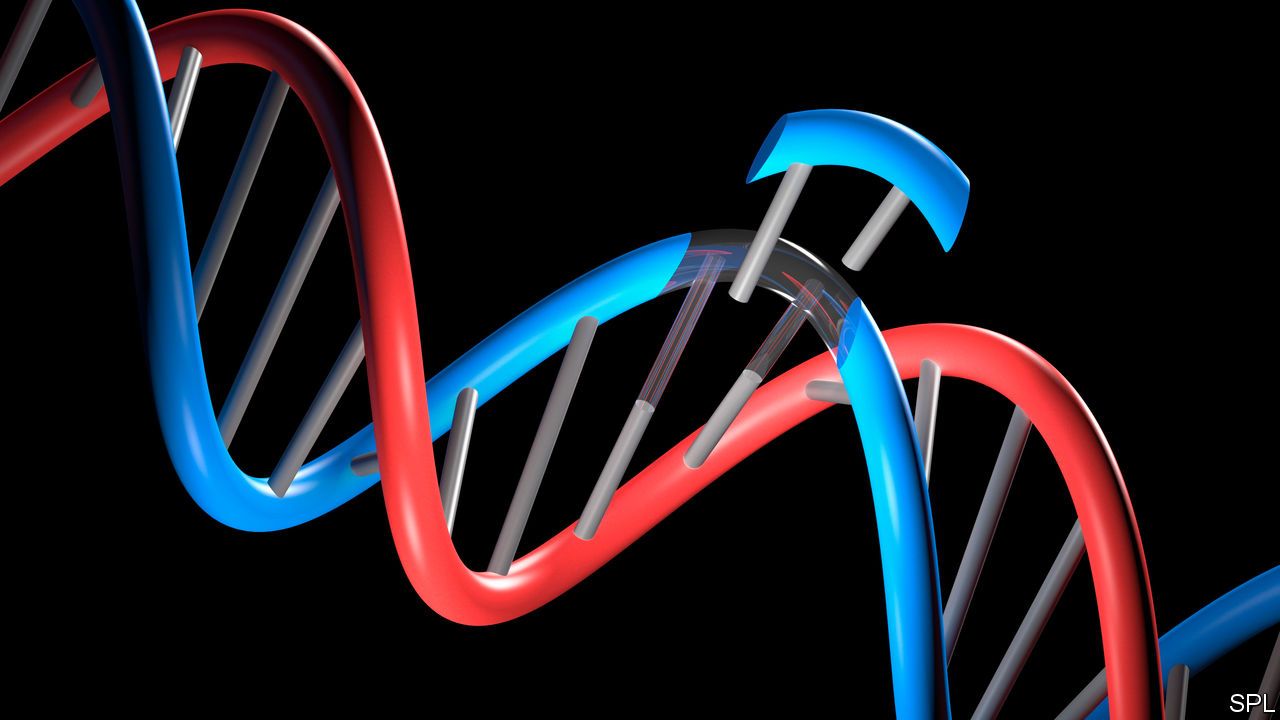When CRISPR-Cas9 is used to edit genomes, off-target DNA damage is more common than previously thought.
A GREAT deal rides on the accuracy of the gene-editing tool known as CRISPR-Cas9. Since its discovery in 2012 it has become popular for tinkering with genomes of all kinds, thanks to its ability to make editing cheap and easy. Firms such as CRISPR Therapeutics, Intellia Therapeutics and Editas Medicine have been built on the idea that it could be used to develop treatments for human diseases. Editas, based in Cambridge, Massachusetts, announced this year that it would work on five new human medicines over the next five years.
In China the technology is already in clinical use. In Hangzhou Cancer Hospital, for example, CRISPR-Cas9 is being employed to engineer immune-system cells removed from patients with cancer of the oesophagus. The hope is that when the engineered cells are returned to a patient’s body, the editing will have improved their ability to attack tumours. More studies involving human beings are expected in other countries for the treatment of beta-thalassaemia, a blood disorder, and Leber’s congenital amaurosis, a form of blindness. Further ahead, there is hope that CRISPR-Cas9 will help treat diseases such as AIDS, cystic fibrosis, Huntington’s chorea and Duchenne muscular dystrophy.
Get our daily newsletter
Upgrade your inbox and get our Daily Dispatch and Editor’s Picks.
